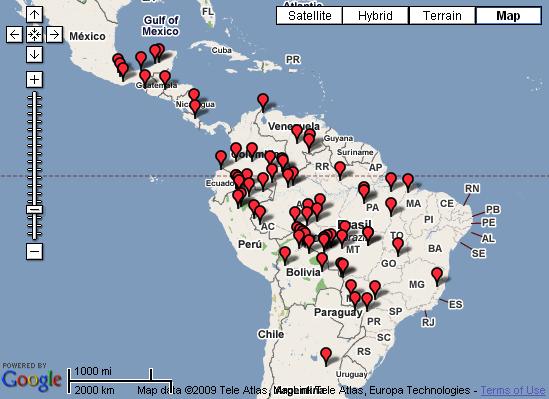Hot on the heels of a map showing how warfare has spared hardly any biodiversity hotspot in the past 50 years comes one on another possible threat to agricultural biodiversity. UNESCO has just announced the publication of its Atlas of the World’s Languages in Danger. There’s a great interactive website all ready for people to start playing with. Below is a screen shot (there doesn’t seem to be a way to export maps, alas) showing critically endangered languages with fewer than 50 speakers in South and Central America. Worldwide there are 318 such languages.
I’d say a disappearing language was a pretty good proxy for risk of crop genetic erosion. So much to mash up, so little time.

